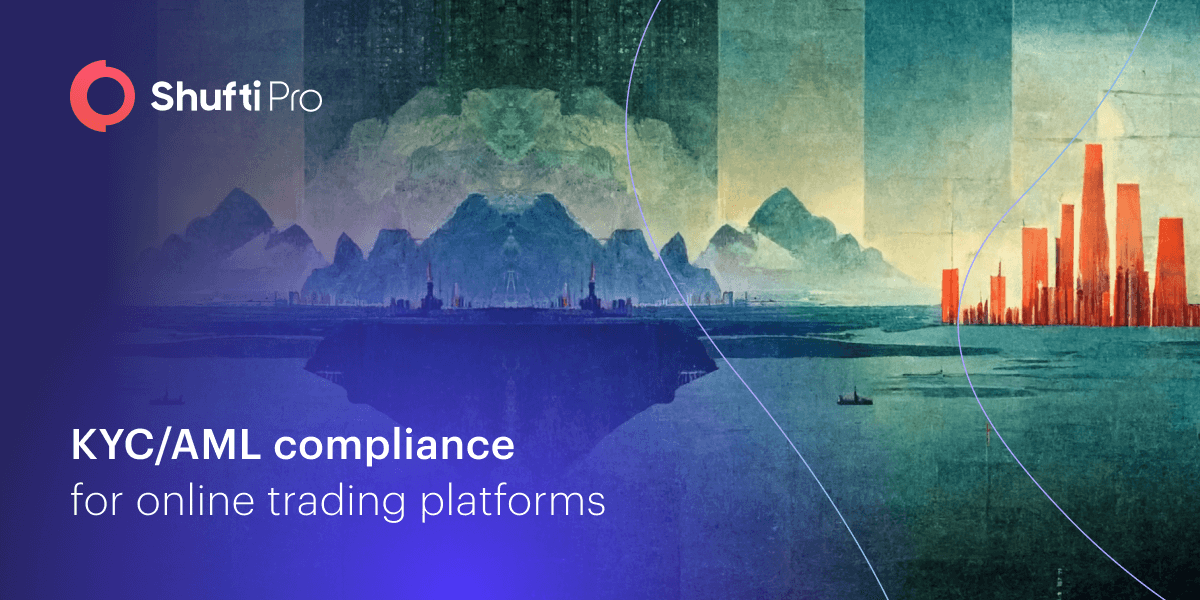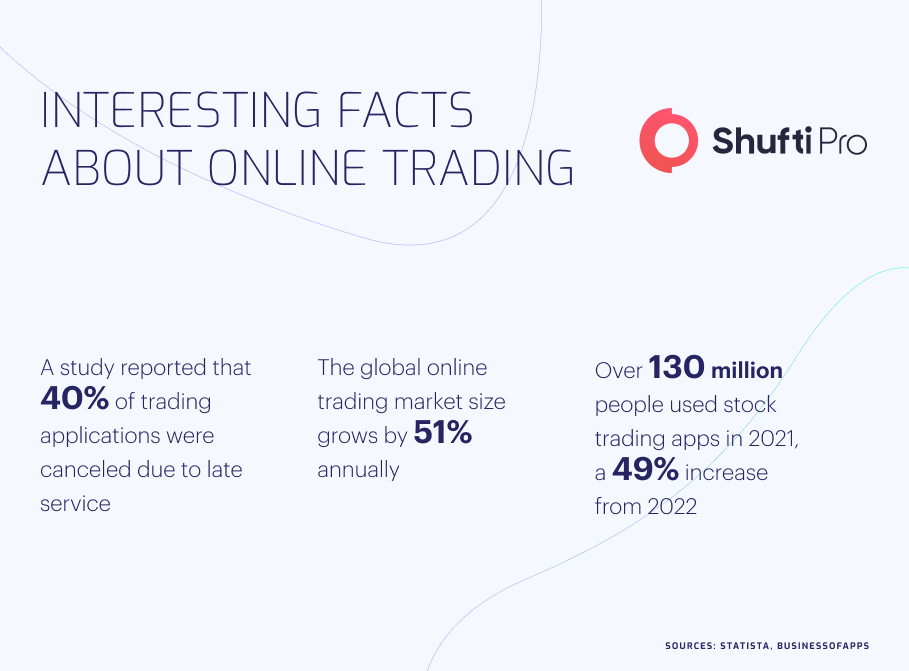KYC and AML Compliance – Addressing the Challenge of Money Laundering in Online Trading Platforms

An online trading platform is a program where shareholders and traders deal through financial intermediaries and pursue their business online with a combination of sturdy features and minimum fees. A few of the main product types of online trading platforms include transaction and commission fees that are used in equity stocks.
Global online trading firms have shown a surge from $9.6 billion to $10.21 billion at a compound annual growth rate of 6.4% between 2021 to 2022 and will grow to $13.13 billion in 2026 at a CAGR of 6.5%. In 2021, North America perched as the biggest region in the digital trading industries. In consonance with the United Kingdom committee of online commerce, a British unauthorized body highly perturbed with business and trading, the digital sector donated $197 billion to the British providence.
COVID-19 and the upsurge in digitization have steered the online trading markets and are increasingly engaging digital models and businesses. As criminals are finding ways to disguise the market from unscrupulous sources, online trading platforms are equally prone to financial crimes as other entities and draw the attention of effective KYC and AML compliance to assist in governance.
Online Trading – An Overview
As a consequence of technological advancements, online trading markets have evolved as mainstream brokerage firms. Since its existence, the market has exploded into development and fluctuated the brokerage industry. Currently, there are about 4 million Americans with active digital trading accounts contributing to 25% of all retail stock trades. As the internet serves as an information gateway, online traders can break any barriers that conventional trading offers. With online trading, investors can execute their merchandise instantaneously with minimum or no barricade at the price of their choice. Moreover, online investors have total control over time and gain information confidently with self-directed portfolio management advancements.
The value proposition in terms of convenience and accessibility has made online trading a very attractive platform for shareholders and investors. 80% of US digital households showed interest in online trading due to low transaction fees. With the technological advancements, online traders also automatized office processing, therefore, eliminating operating expenses. Many online trading sites offer stocks and trade information to make it easy for investors to monitor their financing in real-time.
With the addictive nature and ease of investing too much too fast, online trading platforms pose the risk of being attacked by cybercriminals to exploit the idea of investing in trading platforms. To assess the risk of such illicit activities, there is a need to apply KYC and AML compliance to interrupt money laundering and terrorist financing.
Global Risk Assessment in Digital Trading
Globally, every country is involved in online trading. As a result, Trade-based terrorist financing can take place. Contributors noticed that trade-based money laundering (TBML) enables ventures like the abuse of corporate structures. The benefits of online trading markets have challenged countries to think about risk exposures and vulnerability.
German National Risk Assessments
Germany launched its first National risk assessment in an effort to fight money laundering and terrorist financing. Collectively 35 federal and local authorities were involved in the assessment which was conducted by the Federal Ministry of Finance. The fir NRA spotlighted the importance of TBLM, because of a massive number of people using online trading. The usual TBLM method included the collective invoicing of goods, counterfeit trades, and the investment of extra cash in high-priced goods. In these situations, cooperation with the private sector and other obligated [arties played a decisive role in building an understanding of TBML risk.
U.S National Risk Assessment
The United States declared TBLM as a threat as well as a vulnerability. The European transnational criminal organization and their correlated drug trafficking activities conducted TBLM programs because their sophistication makes it hard to detect. The 2015 National Money Laundering Risk Assessment (NMLRA) offered a modern pattern on TBML schemes, finding in most cases intricate a conniving merchant or front company in the U.S. that received illicit proceeds in return for goods. After the publication of this NMLRA, the U.S. engaged in outreach with multiple financial institutions all around the United States to talk through these findings.

Common Money Laundering Techniques in Online Trading
According to the FATF report, there are several methods that form the foundation of trade-based money laundering:
Over and Under Invoicing of Goods
The lead element of this approach is the distorted representation of the price of the good or service, in order to transfer value. In this type of arrangement, the crucial enabling aspect is that the importer and exporter are deceitful in the misguiding.
Multiple Invoicing of Goods and Services
This technique doesn’t require the misrepresentation of the price; rather it mainly focuses on the use of already existing documentation to account for multiple payments for the same shipment of goods or delivery of services. Furthermore, cybercriminals or terrorist financiers exploit this by reusing these documents.
Falsely Described Services
This involves the misapprehension of the quality or variety of a good or service, such as the shipment of a comparatively inexpensive good, which is mentioned as a more costly item, or a completely different item, to account for value movement.
Best Practices to Counter Trade-Based Money Laundering
The FATF directions set out an extensive substructure of KYC/AML measures for dominion to apply in order to exempt ML and TF efficiently. Along with that, jurisdictions have a certain degree of adaptability in terms of how those measures are interpreted into the national legit and governance frameworks and applied in practice. This pliability is based on the context, threats, and other structural components of each jurisdiction.
Developing an adequate level of understanding of TBML schemes should be the basic principle of any scheme to counter this form of ML. This authorizes the public and private sectors to focus their resources and regulate broader ML strategies. Jurisdictions use NRA as a source that delivers information on ML/TF risks available in the jurisdiction, sometimes with a breakdown by certain sectors.
Online trading firms must subsume identity verification among other KYC measures to make subtle regulations with international standards. One of the vital obligations is to gather the customers’ private information and implement sturdy measures to substantiate their identity during onboarding. Stock exchanges also require strict measures to know their customers when they are engaging in financial transactions.
Final Thoughts
Know Your Customer (KYC) obligations motivate online trading companies to verify the identities of their customers as well as execute background screening to regulate intentional or unintentional participation in criminal activities like money laundering and terrorist financing.
Shufti Pro offers AI-powered KYC services for the online trading industry, allowing them to comply with AML regulations and prohibit financial crimes like money laundering. It verifies identities in less than a second and identifies high-risk entities through background screening against 1700+ watchlists.
Want to learn more about Shufti’s KYC solutions?










